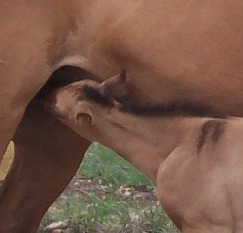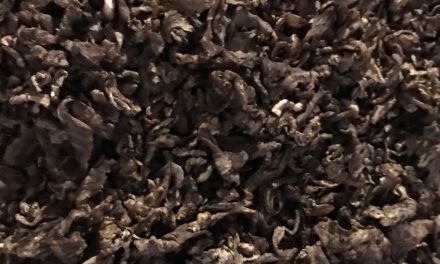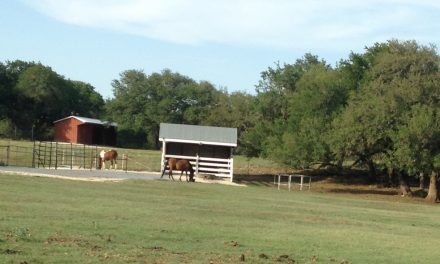THE WAY OF HORSES

Be
prepared. That should be the motto of every horse owner
expecting a mare to foal.
If
you are one of the thousands expecting a foal this spring, are you
prepared for the loss of the dam or the possibility she will have no
milk?
Colostrum is the first
fluid a mare secretes from her udder after foaling. It contains
the antibodies which protect the foal from infection. Colostrum also
creates a mild laxative effect that helps the foal pass the
meconium. The meconium is the first stool and is a thick tarry
substance which can be hard to expel.
Peak absorption time for the nutrients and antibodies in colostrum is
between two and four hours of birth. The protective
immunoglobulins in the colostrum are more concentrated in the early
hours of lactation. As time goes by milk production will dilute
the colostrum and the foal’s ability to absorb the protective
immunoglobulins decreases as the foal’s digestive tract matures.
An average horse foal should
receive 250 milliliters of colostrum every hour for the first 6 hours
of life.
Between 12 and 36
hours of age, your veterinarian should test the foal’s blood.
The blood sample is checked for IgG concentrations. The test
will show if the foal has received the proper levels of antibodies.
If the foal has not, a blood transfusion of equine plasma should be
done to insure the foal is protected.
A normal IgG count is 800mg/dl or higher. Below 200mg/dl and
the foal’s life is in danger. Most veterinarians will recommend
a plasma transfusion at 400mg/dl or lower….consult your
veterinarian.
But what if the
mare dies, has no colostrum, or won’t let the foal nurse?
If the mare dies or won’t let the foal nurse, try to milk her.
Let the foal suck from a bottle (use a lamb nipple). Save any
extra colostrum you collect for later feedings.
If there is no colostrum you should have a backup plan. This is
where being prepared pays off.
Colostrum products available at feed or farm supply stores are bovine
(cow) based. They will not provide the antibodies needed by a
foal, but can supply some nutrients. The foal will not be
protected from infection when fed a commercial colostrum product.
A transfusion of equine plasma will be needed. Make sure your
veterinarian has some in stock or it is quickly available.
Months before the foaling date contact large horse breeding farms or
a local dairy farm. Bovine colostrum is better than nothing –
equine plasma can be given to provide the immunoglobulin. Ask
for some colostrum and then freeze it.
Colostrum can be frozen for about two years. Frozen colostrum
should be stored at -4F (-20C). I have found the best way to
freeze it is in ice cube trays. Each cube is about one ounce or
30 milliliters (ml.). You would need about nine cubes every
feeding for an average horse foal.
Do not thaw colostrum in the microwave! Microwaves kill the
antibodies present in the colostrum.
If you have a successful foaling with no problems – milk the mare and
freeze the colostrum. A healthy mare produces more colostrum
than a foal needs. You can collect up to 250 milliliters (8.5
ounces) from a horse mare after the foal has sucked several times.
Collect the colostrum within six hours of foaling in order to get the
most concentrated amount. Do not collect the colostrum until
after the foal has nursed several times. Freeze and save the
collected colostrum for future use. Make sure you write a date
on the package and what the package contains.
The plasma transfusions are not as good as colostrum from the dam.
The levels of immunoglobulin are not as high. Plus the plasma
transfusions are very expensive.
There are colostrum banks throughout the country. Donations of
colostrum are welcome, and in some cases if you donate, and then need
some at a future date there is no charge.
Be prepared!
* Earn Professional Certification as Horse Trainer, Stable Manager or Riding Instructor. All courses are online. Visit www.equinestudiesinstitute.org for information.



